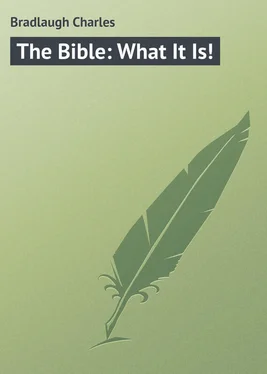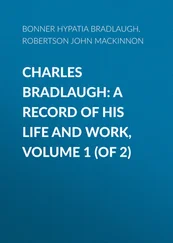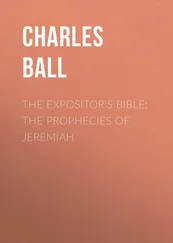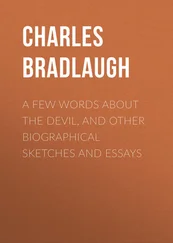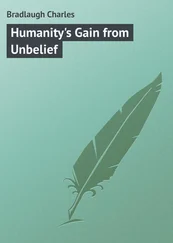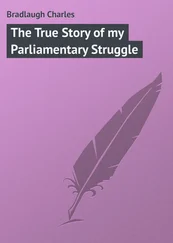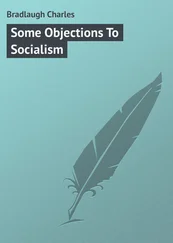Charles Bradlaugh - The Bible - What It Is!
Здесь есть возможность читать онлайн «Charles Bradlaugh - The Bible - What It Is!» — ознакомительный отрывок электронной книги совершенно бесплатно, а после прочтения отрывка купить полную версию. В некоторых случаях можно слушать аудио, скачать через торрент в формате fb2 и присутствует краткое содержание. Жанр: foreign_prose, на английском языке. Описание произведения, (предисловие) а так же отзывы посетителей доступны на портале библиотеки ЛибКат.
- Название:The Bible: What It Is!
- Автор:
- Жанр:
- Год:неизвестен
- ISBN:нет данных
- Рейтинг книги:5 / 5. Голосов: 1
-
Избранное:Добавить в избранное
- Отзывы:
-
Ваша оценка:
- 100
- 1
- 2
- 3
- 4
- 5
The Bible: What It Is!: краткое содержание, описание и аннотация
Предлагаем к чтению аннотацию, описание, краткое содержание или предисловие (зависит от того, что написал сам автор книги «The Bible: What It Is!»). Если вы не нашли необходимую информацию о книге — напишите в комментариях, мы постараемся отыскать её.
The Bible: What It Is! — читать онлайн ознакомительный отрывок
Ниже представлен текст книги, разбитый по страницам. Система сохранения места последней прочитанной страницы, позволяет с удобством читать онлайн бесплатно книгу «The Bible: What It Is!», без необходимости каждый раз заново искать на чём Вы остановились. Поставьте закладку, и сможете в любой момент перейти на страницу, на которой закончили чтение.
Интервал:
Закладка:
'Now we find that, although seeds, herbs, and flowers and plants were stated to have been "created," "made," or "formed," on the third day, we find no evidence of their existence during periods incalculable subsequent to the appearance of animal life. Any short period of non-appearance might not satisfy the requirements for the proof of "non-existence;" but the astounding fact or the absence of the vegetation specifically the same as the present, through all the intervening series from the earliest dawn of life to the tertiary, can leave no doubt on any unbiassed or candid mind of their "non-existence" in the early ages of the created world, and of their subsequent altered structure. May we not fairly argue and expect that in such multitudinous species some evidence of their existence during enormous periods (especially when we find remains of other vegetable forms and animal life abound) would appear. And if this one day's work does not disclose the whole vegetable creation, when or at what period did the subsequent one take place?
'I apprehend I have shown circumstances surrounding the negative evidence, to give to the non-appearance of land vegetation through the periods of the Silurian and Devonian the force of proof of nonexistence.
'I also submit that I have shown, by direct evidence, that there was no oneness of creation of vegetable life, but that altered forms and structure were peculiar to periods in which they flourished; and that there never did exist any immense primaeval flora as narrated in Genesis.
'I have thus far had the task of showing how negative evidence,. in the non-appearance and the subsequent varied forms, contradict the order of oneness in the creation or "formation" of vegetable life.
'I will now produce positive evidence bearing upon the same discrepancies. We have in the third day the creation of vegetable life, but no animal life until the fifth day – then we have (we must be excused reiteration) fish and fowl and the whales, whilst on the sixth and last day were brought forth creeping things. The first sign of animal life yet discovered is of the radiate class, in the lowest zone of the lower Silurian. We have another class of animal life, the articulata , in the same zone; and we have some three hundred species of molluscs through the silurian. Nay, so large is the last named class at this early period, that it is denominated by American geologists "the age of molluscs." I must remind our readers that during the whole of this immeasurable age, we have not a single authenticated land plant ; nay, further, we have fish , the creation of the fifth day, before aught of the third day's creation appears.
'We have, also, a reptilian vertebrate land animal in the Devonian ages incalculably before the appearance of any seed bearing herbs or fruit bearing plants. Here, then, is positive and direct evidence of the appearance of types of the four great groups of animal life – the radiate , the articulate , the molusca, and the vertebrata – not a few hours or days or months, or a few years, but thousands upon thousands of years before a single evidence of the seed-bearing and fruit-bearing plants of the first day's creation existed. It must not be said they might have existed yet are not preserved, for this is opposed to the facts previously stated of the preservation of the algae and fucoids during these periods, and of the immense flora during the subsequent coal formation, and the pollen, flowers, fruits, leaves, and trees in still younger formations. Nor can it be met by an argument against the fitness of the condition of the earth at this time.
'If, on the other hand, it is urged, Where are the evidences of the existence of these several forms of life at the periods stated? I answer, the facts bearing out my assertions will be found recorded in Lyell, Murchison, Phillips, and Morris (the collectors from the several strata named), all geological writers of repute; and the fossil forms themselves can be examined in the museums of the country.'
Amongst the many works which have been issued for the purpose of explaining away the discrepancies between Geology and Genesis, is one by Dommick McCausland, entitled 'Sermons in Stones,' and the following is a portion of the mode of harmonising pursued by the author. While admitting that the transactions mentioned in the first chapter of Grenesis could not be brought within the compass of six days, it is urged by Mr. McCausland that the scene of the creation was presented to Moses 'In a series of visions, each separate one occupying an evening and a morning, that is to say, an intermediate night, the season of visions or dreams . So that, in commencing our task of making revelation reasonable, we are to imagine that Moses dreamed the whole of the history of the creation.
But even this hypothesis is open to objection. What 'scene' could 'present to the vision of Moses' (if we admit Moses to be the dreamer) an earth without form and void, especially with darkness upon the face of it? It is true that, if you suppose the writer dreamed the whole story of the creation, it will account for much that is otherwise most improbable; for we all know what strange images are conjured before us in our dreaming moments, sometimes they are compounds, sometimes reversals, of our waking experience.
McCausland proceeds, 'It is well known that the transactions of years are often compressed, in a dream, into the space of a few minutes; on the same principle, the operations of the divine author of creation, which may have occupied a long series of years, may have been presented to Moses as the events of a single day.' What may have been or may not have been, is hardly sufficient to base an argument upon. It is most extraordinary that, in discussions upon this subject, the reverend advocates arrogate to themselves the right of conjecturing 'What God meant to do,' 'What God's intentions were,' 'What might have happened before this occurred or that was prevented,' 'That this is literal,' 'That that is allegorical,' etc., etc.; and yet, while they are conjecturing and supposing outside the text to an unlimited extent, it becomes rank blasphemy to advance an opinion to the plain English meaning of the text itself. I am afraid that Moses is not the only dreamer; for a few pages further I find this remarkable sentence, 'We know from Geology, in confirmation of Scripture, that there was a beginning, when the universe was formed out of nothing'!! In which strata or in what rock was this knowledge found? Are we to be told in the present day that in the universe we find evidence which convinces us that there was a period when the substance of that universe did not exist – when there was nothing? Why, the very form of words conveys an absurd and contradictory meaning. It is impossible for man, in his boldest flights of imagination or doubting, to annihilate existence; he may, in his fancy, vary its modes, but he cannot, even in his wildest moods, ignore its substance.
Of the fiat, 'let there be light.' the harmonizer says, 'This divine command and the result of it does not negative the previous existence of light. It only conveys the information that light was commanded to shine. The sun had sent forth his rays from the date of the creation, but the black misty envelope of the deep could not be penetrated until the divine fiat went forth for the advent of light to its surface.' Quoting Genesis, chap, i, v. 14 to 19, he says, 'With respect to this language, all philologists agree that it does not mean that the sun, moon, and stars were for the first time called into existence at this period of the creation.' This is not true; if the verses mean anything, they positively do mean that the sun, moon, and stars were, for the first time, created on the fourth day, and it is only the evident falsity of this statement which has compelled religious philologists to twist 'the language' into a spiritual meaning.
Читать дальшеИнтервал:
Закладка:
Похожие книги на «The Bible: What It Is!»
Представляем Вашему вниманию похожие книги на «The Bible: What It Is!» списком для выбора. Мы отобрали схожую по названию и смыслу литературу в надежде предоставить читателям больше вариантов отыскать новые, интересные, ещё непрочитанные произведения.
Обсуждение, отзывы о книге «The Bible: What It Is!» и просто собственные мнения читателей. Оставьте ваши комментарии, напишите, что Вы думаете о произведении, его смысле или главных героях. Укажите что конкретно понравилось, а что нет, и почему Вы так считаете.
